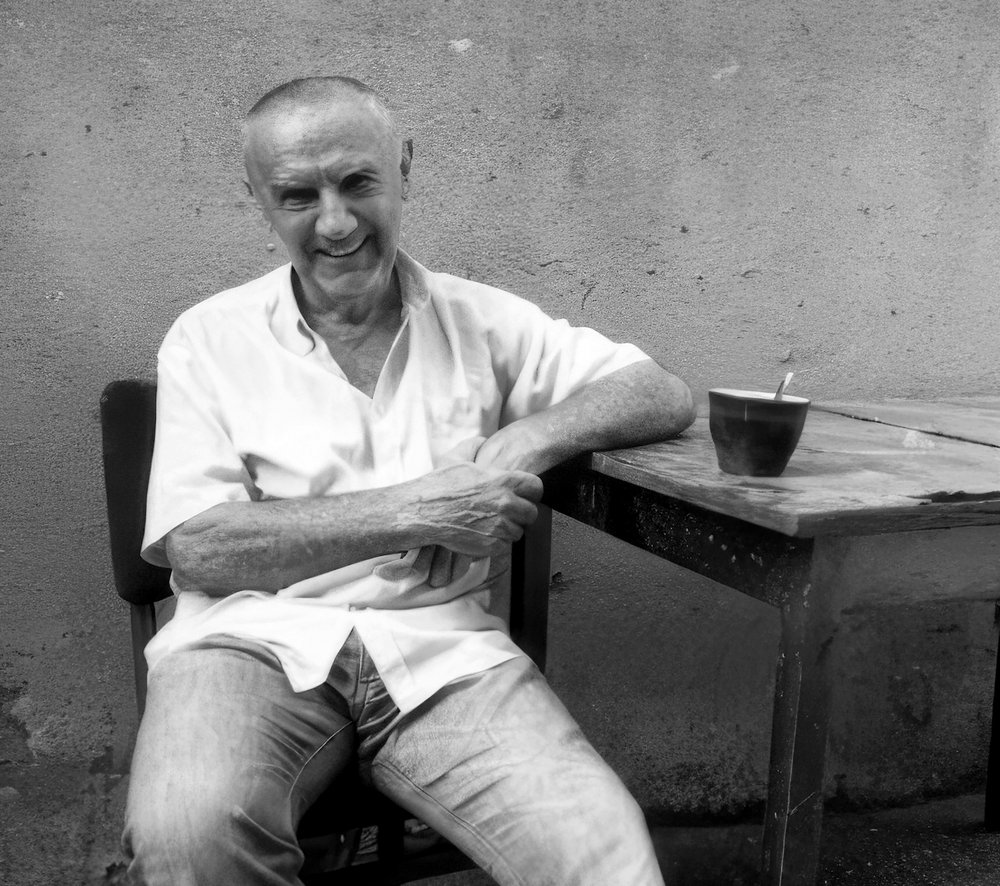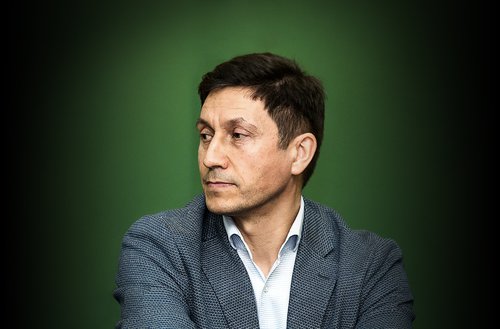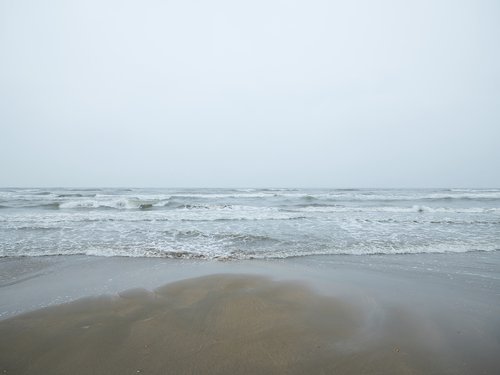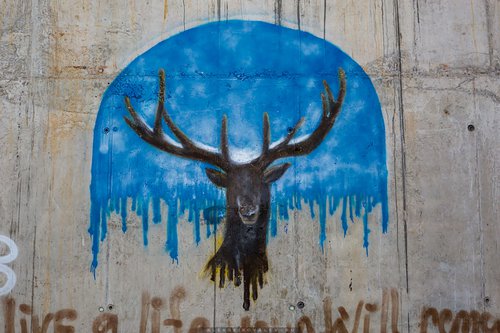Magomed Kazhlaev’s Ornament and Background

Portrait of Magomed Kazhlaev. Courtesy of Sistema Gallery
Dagestani artist Magomed Kazhlaev’s exhibition ‘Recount’ at the Sistema Gallery in Moscow is a compelling retrospective which explores ornamental patterns and backgrounds as central artistic elements, challenging traditional compositional hierarchies through intimate, densely hung displays.
‘Recount’ is a thumb sized solo retrospective of the work of artist Magomed Kazhlaev (b. 1946), which as curator Irina Gorlova explains does not look to chart the evolution of the artist’s creativity but to find across works from different years a ‘plastically justified spatial logic’ as the artist himself puts it. At the gallery visitors find themselves as if on an observation deck, looking at a sweeping panorama filled with thick clusters of paintings in which you might notice allusions to the artist’s native Dagestan, where travelling in the mountains, you can see buildings nestling on the peaks. However, for a native of the North Caucasus, these views do not possess that metaphysical aura which romanticism taught Europeans to perceive in art and instead these mountains are inhabited by them, they are close and comprehensible.
The exhibition is divided into islands, within which canvases are structured by dense salon-style hanging. Here one can find a reference to the origins of the modern artistic system – the era of salons, when painting became liberated and truly secular, acquiring human dimensions with their vanity, transience and mundanity. Here Kazhlaev is like a fish in water, opposite to eternity and loftiness. Inscriptions on some works record everyday phrases, accidentally overheard conversations, words that suddenly came to mind. On one of the paintings a burst of words and phrases: “Armenian cognac, Turkmen carpets, Pavlovo Posad shawls, Ivanovo calicos, Dagestani tightrope walkers, Ussuri ginseng, Vologda lace”. It seems you find yourself in a bazaar. Another work captures an intriguing plot in a few words, without a beginning or end, just the main action: “Rizvan ignored the agreed conditions, and therefore hastily disappeared, making use of a stolen automobile”. It is as if you have just turned the TV on at the most interesting moment, but didn't linger and switched it off again.
It would be wrong to see conceptualist influences and there is no cunning super intellectual approach hiding behind the artist's manner and certainly no literariness. Kazhlaev walks a simple path, and does this with sincerity, measure and good taste. For this, critic Anna Tolstova called him “a realist in the highest sense of the word”. In the artist's works one can trace a genealogy ascending to the nonconformists, unsurprising since among his teachers and friends were people from this milieu. Generally, relative to the bright stars of late unofficial art, and all the mainstream movements in contemporary art, Kazhlaev's trajectory seems not to have intersected at all. He lived and worked not even parallel to them, but somewhere else in another dimension.
Kazhlaev's personal exhibition at Sistema Gallery runs parallel to a project ‘Neither Together, Nor Apart’ at the GES-2 House of Culture, where the artist's works are generously scattered throughout the exhibition allowing you to better understand his work. At GES-2, his paintings with “ornamental” patterns are juxtaposed with the decorative design of palaces from ancient Central Asian cultures. Ornament is often interpreted as something located on the periphery of vision and conscious perception, something regarded as a secondary or incidental element, something not considered as a serious and important topic for discussion.
Surveying the exhibition at Sistema Gallery it becomes clear that he generally makes ornament, and such secondary elements of a composition (like the background) as the protagonist of his work. According to Tolstova it signals an interest in abstract painting where movement towards non-objectivity as his goal although it would be missing the point to reduce the entire complex of his techniques and strategies to this alone.
The focus on the ornamental background in his works can be read as a human struggle for that same enchanting transience – the beautiful frailty of existence. A person dies, another is born, mountains form, then over millions of years they are destroyed, grass grows green, then withers, but, if one looks at the whole, everything is alive. And this boundless field of life, fundamentally, becomes one large carpet with a complex pattern applied to it. It would hardly be possible to divide such a hypothetical image into the main and insignificant, semantic centre and periphery. Here all elements are equally important, even the most minute and barely noticeable. That in the art of recent millennia there has been a bias towards highlighting central figures, narrative and compositional cores is another matter. And Kazhlaev is among those few artists who wants to restore balance, to return indivisibility and wholeness to the world surrounding us within the space of an artistic work. In this regard, one can hardly speak of abstraction.
Of course, Kazhlaev's approach is pure utopia. But then Kazimir Malevich's suprematism was essentially a rather voluntaristic attempt to change the fundamental conventions of art– and it worked, albeit not on the scale the initiator of that revolution envisioned. Kazhlaev, unlike the avant-gardists of the early 20th century, has no global idea of world reorganization. He acts alone, forming neither school nor doctrine. He simply cultivates his garden. Gorlova has shined a light on these modest but confident aspirations well at the exhibition. She has united the artist's works by using different categories focusing on backgrounds, geometric patterns,ornaments and those with text. These sections are not separated from one another, but the exhibition flows smoothly with a continuous stream of imagery, just as the paintings themselves begin to be perceived not separately, but as parts of a unified whole. And somewhere in the middle of it all the artist is happily bathing, rejoicing in every moment, every blade of grass, every letter, every shade.

















